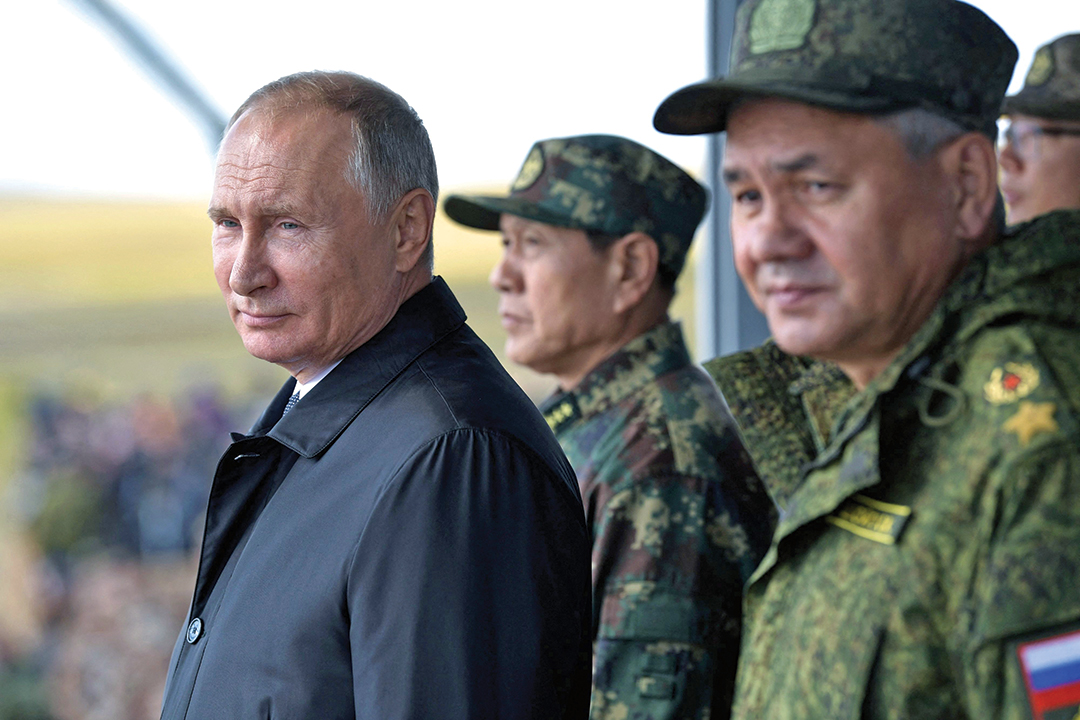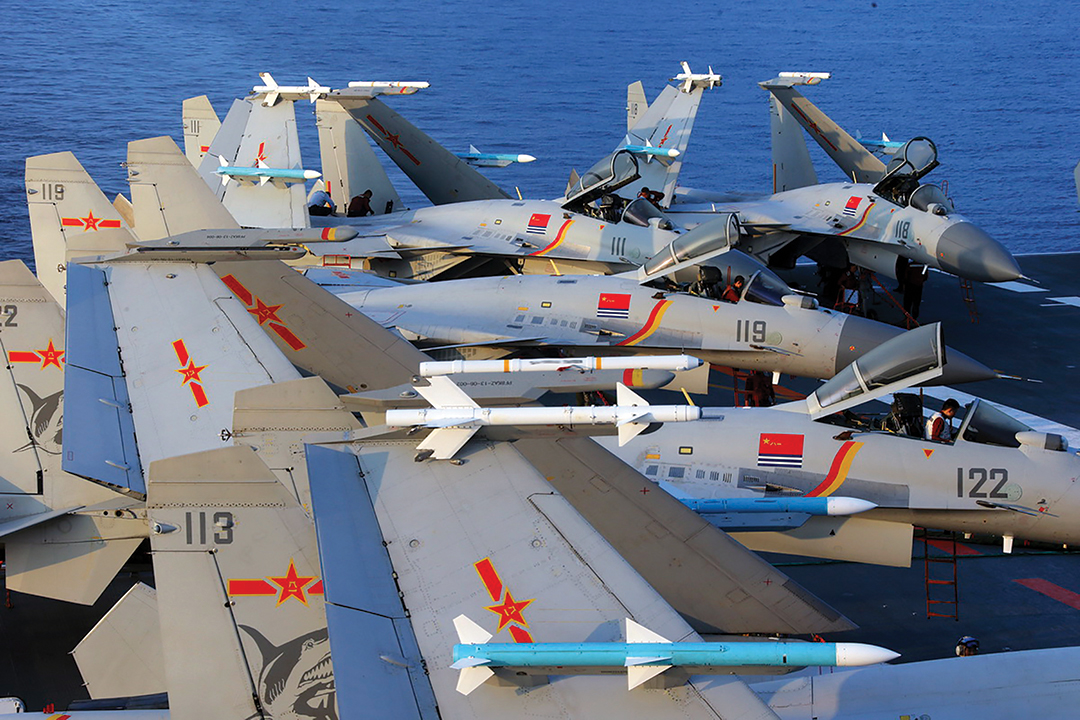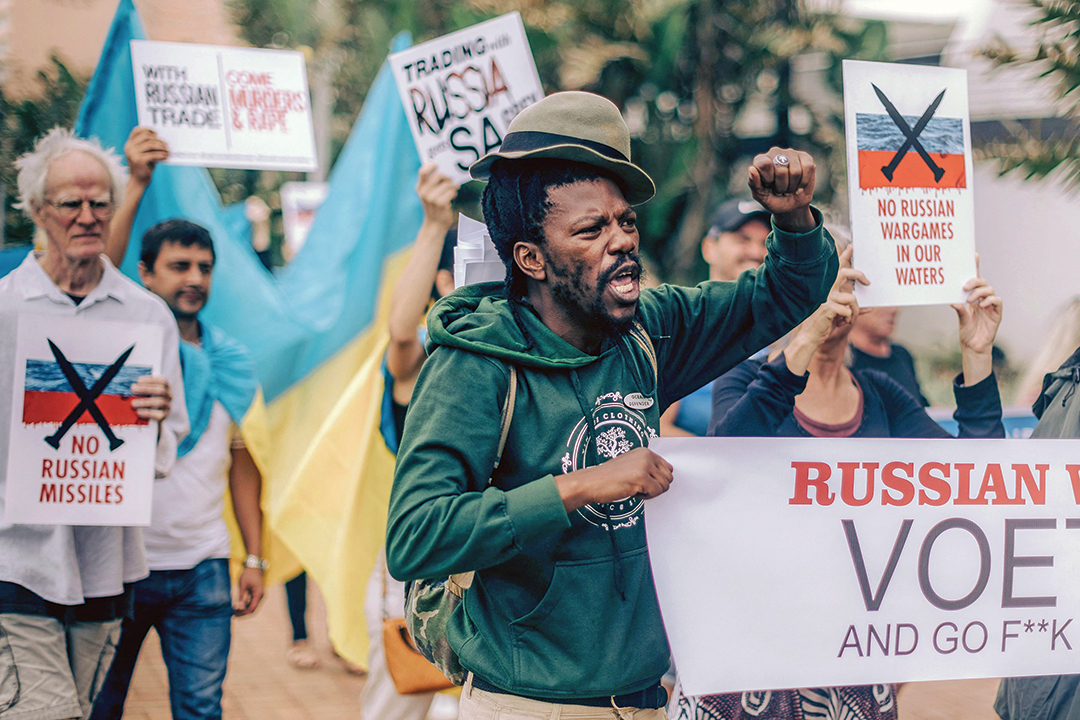What China-Russia Military Exercises Portend for Taiwan and Beyond
By Narantsatsral Enkhbat, Marshall Center alumna
China and Russia are expanding their defense cooperation through joint military exercises, visits of high-level defense officials, and arms trade and cooperation on military technology. These joint military exercises have become a key feature of China-Russia defense cooperation, demonstrating the deepening strategic partnership between the two countries. In November 2021, then-Defense Minister Wei Fenghe of China and his Russian counterpart at that time, Sergei Shoigu, signed the “Roadmap for Military Cooperation for 2021-2025” to guide their bilateral defense collaboration. As reported by defense intelligence company Janes, the road map focused on increasing bilateral collaboration on strategic military exercises and joint patrols. The increased frequency of joint China-Russia exercises and strategic patrols in the West Pacific, amid rising tensions in the Taiwan Strait, carries significant implications for Taiwan and raises the important question of what political-strategic objectives Beijing aims to accomplish through these drills.
A Reassuring Partnership
Military exercises can serve political and strategic purposes, according to historian and political scientist Beatrice Heuser, such as reassuring friendships with allies or partners and deterring adversaries. In China’s military strategy, international joint exercises are considered an integral component of overseas use of military power, part of what strategists call “non-war military operations.” In this regard, bilateral exercises are commonly referred to as the soft use of hard power. China has participated in a number of Russia’s annual military exercises, including Vostok-2018, Tsentr-2019, Kavkaz-2020, Zapad-2021 and Vostok-2022, and uses these exercises as a way to reassure Russia of its friendship. China hosted Zapad-2021 in the Ningxia Hui Autonomous Region, marking the first time that Russia’s annual military exercise was held on Chinese territory. The state-run Chinese media source Global Times emphasized the importance of the joint exercise to both countries, saying it was to “consolidate the comprehensive strategic partnership in a new era between China and Russia, and deepen the pragmatic cooperation and traditional friendship between the two militaries.”
Moreover, the two nations have been co-organizing the “Joint Sea” naval drills since 2012, and there has been a significant increase in the frequency and scale of these exercises. Joint Sea-2023, conducted in the Sea of Japan, featured more than 30 naval aviation assets, including anti-submarine aircraft, helicopters and fighter-interceptors from both navies. Joint Sea-2022 took place in the East China Sea in December 2022. According to the official website of the People’s Liberation Army (PLA), a senior Chinese naval officer underscored the significance of these joint exercises, stating that they have evolved into a stable cooperation platform and vital communications channel for the two militaries. Through these exercises, the two sides demonstrate mutual support as close strategic partners.

In March 2023, Moscow pledged to support China on the “Taiwan issue” in a joint statement released after a meeting between Chinese Communist Party (CCP) General Secretary Xi Jinping and Russian President Vladimir Putin. The statement affirmed Moscow’s recognition of Taiwan as an inseparable part of the People’s Republic of China (PRC), its opposition to any form of Taiwanese independence and its firm backing of China’s actions regarding the democratically governed island.
In recent years, tensions in the Taiwan Strait have subtly increased, driven by the heightened strategic competition between China and the United States. In 2022, when then-U.S. House Speaker Nancy Pelosi visited Taipei, the Chinese responded assertively with a series of live-fire military drills, including firing a hypersonic missile into the waters around Taiwan. The following year, after former Taiwan President Tsai Ing-wen’s meeting with the next U.S. House speaker, Kevin McCarthy, the PLA conducted a live-fire drill, simulating strikes against Taiwan involving the deployment of an aircraft carrier, long-range rockets, vessels, fighter jets and conventional missiles. Tensions were exacerbated by a February 2024 incident near Kinmen Island, where two Chinese fishermen drowned after their boat was chased by Taiwan’s Coast Guard. With tensions continuing to escalate in the Taiwan Strait, Beijing will likely seek to further tighten its military ties with Moscow, and joint exercises serve as an important platform to facilitate collaboration between the two militaries, given that the two nations do not have an official military alliance.
Signaling Deterrence
According to China’s military strategy, exercises are considered a crucial means of implementing strategic deterrence. “The Science of Military Strategy,” a key Chinese book on military strategy and doctrines, published in 2020, emphasizes the role of exercises in creating confusion and uncertainty. It asserts that exercises achieve a deterrent effect by showcasing the PLA’s combat capabilities to potential adversaries, instilling doubt regarding China’s intentions and inducing psychological panic. China sometimes uses military drills to warn adversaries that Beijing views something they have done as a provocation. By showcasing its close military ties with Russia, China aims to discourage actions that could undermine its interests or pose a threat to its territorial claims, particularly concerning Taiwan.
In 2019, China and Russia began to conduct strategic sea and air patrols in the Sea of Japan, East China Sea and western Pacific Ocean. Initially, from 2019 to 2021, joint patrols occurred once a year, but in 2022 two joint air patrols were conducted over the Sea of Japan and the East China Sea. In May 2022, the two nations sent strategic bombers near Japan when the leaders of the Quadrilateral Security Dialogue (Australia, India, Japan and the U.S.), or Quad, met in Tokyo. Then, in November, Chinese H-6K and Russian Tu-95MS strategic bombers, escorted by Russian Su-30 SM and Su-35S fighters, flew close to Japan and South Korea. The Chinese and Russian aircraft entered South Korea’s air defense identification zone with the intention of intimidating one of the U.S.’s most important allies in the region.

A significant shift occurred in 2023, when the frequency of joint patrols increased to three with even more over the Sea of Japan and the East China Sea. The CCP mouthpiece Global Times emphasized the “firm” China-Russia military cooperation demonstrated by the patrols. In August 2023, a China-Russia flotilla conducted a naval patrol near Alaska not long after Japan expressed intent to host a NATO liaison office beginning in 2024.
From China’s perspective, these drills have a deterrence function by demonstrating Russian support. If China intends to invade Taiwan in the near future, it would be crucial to dissuade key U.S. allies, such as Japan and South Korea, from involvement in the conflict. This creates the impression that Russia is backing China even if it is not. Although China and Russia are drawing closer, it is highly unlikely that Russia would directly engage in any conflict related to Taiwan. However, through joint military exercises, Beijing hopes to sow confusion among U.S. allies in the region and convey the impression that Beijing and Moscow stand united.
Projecting Power in the Indian Ocean
Since 2019, China and Russia have engaged in joint naval drills with additional partners, extending beyond their traditional geopolitical spheres. A China-Russia-South Africa trilateral maritime exercise, codenamed Mosi (meaning “smoke” in the South African Tswana language), took place near Cape Town in November 2019. According to the official PLA website, the primary objective of the exercise was to improve “maritime economic security, interoperability and maintaining the good relations between the participating navies.” The three countries held a second joint naval drill in the Indian Ocean off South Africa in February 2023. These drills not only signify the broadening of the Sino-Russian partnership to include third parties but also serve to enhance their naval power projection capabilities in the Indian Ocean.
Furthermore, China and Russia conducted a first-ever trilateral naval exercise with Iran in the Gulf of Oman in December 2019. China’s state-run Xinhua news agency reported that the exercise aimed to deepen cooperation among the three nations’ navies and enhance capabilities to safeguard maritime security. A second exercise was held in the Gulf of Oman in January 2022, to which China sent two ships, shipborne helicopters and a contingent of PLA Marines.
These activities suggest China and Russia seek to strengthen their positions in the Indian Ocean, which is one of six regional priority areas in Russia’s maritime domain. According to its 2022 Maritime Doctrine, a major goal of Russian policy in the region is “maintaining and supporting the naval presence of the Russian Federation in the Persian Gulf using logistics support centers in the Red Sea and the Indian Ocean and using infrastructure of the states in the region to support the naval activities of the Russian Federation.” To this end, for several years, Russia has engaged in negotiations with Sudan’s government to open a base in Port Sudan, strategically positioning itself in the Red Sea. A permanent Russian military base in Sudan would greatly enhance its strategic posture in Africa and the Indian Ocean.
China views power projection in the Indian Ocean as crucial to safeguarding its national interests, such as securing its oil shipping routes. China’s enhanced maritime position carries substantial strategic implications for Taiwan. Beijing is particularly concerned with the U.S. security arrangement with Australia, India and Japan. In August 2023, the Quad conducted the Malabar military exercise off the coast of Australia. The exercise, involving 2,000 personnel, incorporated advanced anti-submarine, air defense and gunnery drills, and aviation and communications operations. Beijing worries that in a Taiwan Strait conflict, Quad members might help the U.S. disrupt China’s energy supply. Through international military exercises with Russia and other partners, and various nonwar maneuvers, China seeks to improve its power projection capabilities to effectively respond to and mitigate risks in the Indian Ocean region.

Conclusion
Careful observation and analysis of China’s military exercises are crucial to gaining insights into its actions and a better understanding of its behaviors and strategic intentions. To avoid unnecessary incidents or clashes with China, it is important for the U.S. and its allies in the region to accurately interpret the messages behind Chinese military activities, especially its large-scale exercises. Although Beijing and Moscow do not have an official military alliance, China uses their bilateral exercises to reassure its most important strategic partner while simultaneously intimidating regional adversaries amid rising tensions in the Taiwan Strait.
By establishing interoperability and enhancing capacity for joint operations, Russia signals its ability to engage in closer military collaboration with China. Regardless of the strategic interpretation, the two militaries are improving interoperability through joint drills and strategic patrols, and increasing military cooperation and joint arms development. At the same time, China benefits from its closer military partnership with Russia, which Beijing hopes acts as an effective deterrence to the U.S. and its allies. It remains to be seen whether this China-Russia cooperation remains limited to the Indo-Pacific region or if it will one day extend into the North Atlantic and the Mediterranean.


Comments are closed.